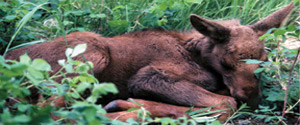| |


The Yukon Flats NWR staff is actively involved with various environmental education programs and activities in several Yukon Flats and Fairbanks area schools and organizations. Staff members regularly present the Alaska Junior Duck Stamp Conservation and Design Program to promote a greater awareness of waterfowl and wetlands conservation. The refuge maintains a small environmental education lending library that is available to the public.

Most recreational travel through Yukon Flats National Wildlife Refuge is by river. Floaters with a taste for fishing can expect to encounter resident arctic grayling and northern pike.

Moose are the most sought after game animals on Yukon Flats National Wildlife Refuge. The water-rich habitats that make up most of the refuge's land, as well as the new growth encouraged by regular fire and flood, provide ideal conditions for these large ungulates. Black bears are also common, and grizzly bears, though not so abundant as their smaller cousins, can be found throughout the refuge. Dall sheep frequent the alpine tundra of the White Mountains.

Various activities, such as hunter education classes and wildlife awareness events, are conducted by Yukon Flats NWR staff throughout the year. Messages about conservation and the purposes of the refuge are shared with numerous groups and individuals throughout interior Alaska. Refuge staff are frequently invited to speak at schools, local businesses, community gatherings, and visitor centers on many topics. A number of interpretive exhibits and kiosks about the refuge are located in several nearby communities.

Beaver Creek, a nationally designated Wild River, flows into the refuge from the mountains in the south. Virtually any float trip through the refuge, which has been called the most productive arctic wildlife habitat in North America, will undoubtedly include many thrills for the wildlife enthusiast. With the possibilities of sighting bear, moose, waterfowl, furbearers, and songbirds, there will be new things to wonder at with every curve of the river.
Photographers are also likely to use a river as their means of access to the refuge. As is the case with most of Alaska's National Wildlife Refuges, there are no developed trails or campsites here, and the adventurous photographer will have the chance to focus his or her lens on an area shaped entirely by nature, and not by the hand of man.


Refuge lands are open to the public at all times. The refuge office in Fairbanks is open from 8 a.m. to 4:30 p.m., Monday-Friday, excluding federal recognized holidays.

There are no visitor's fees charged anywhere on the refuge.
|
|

